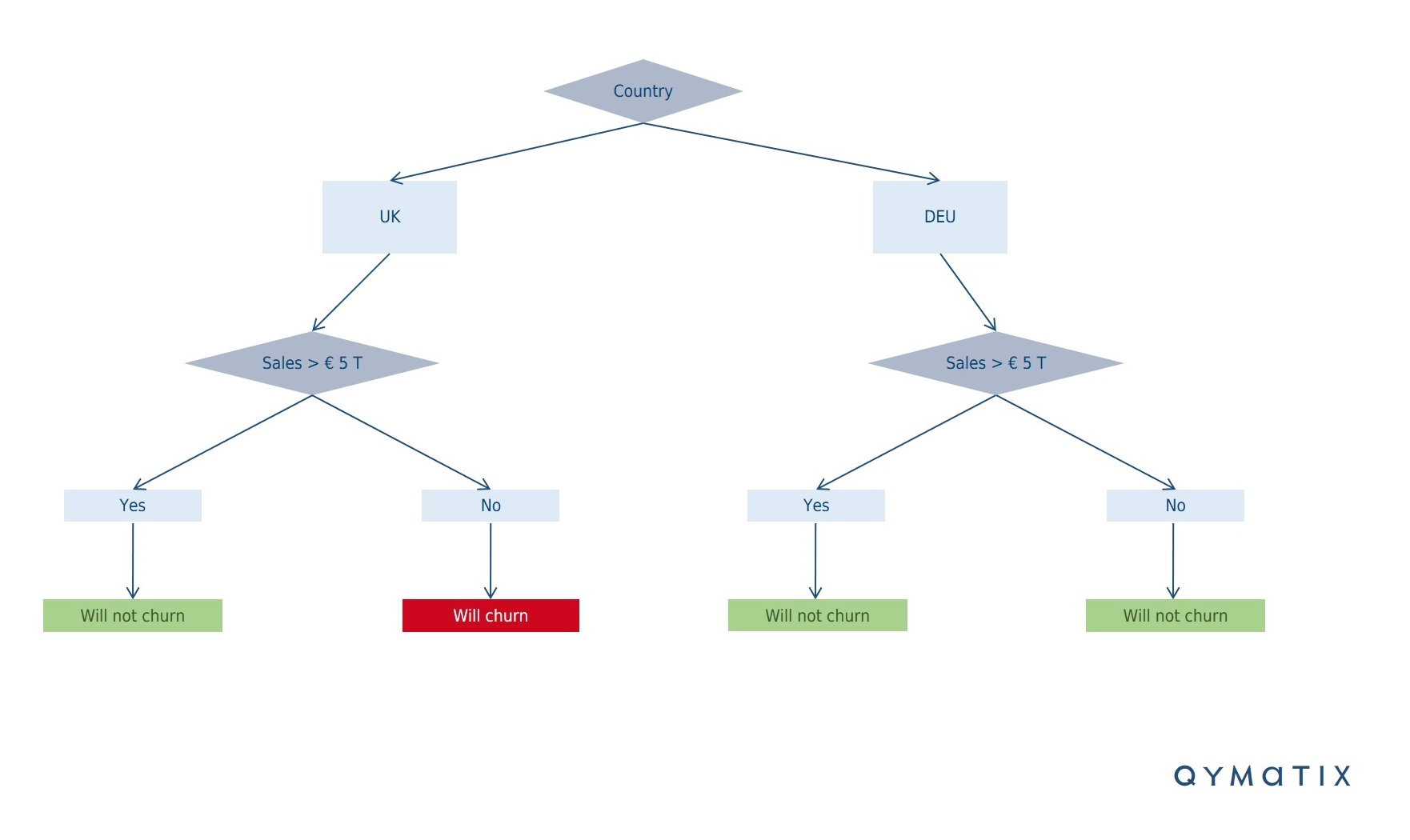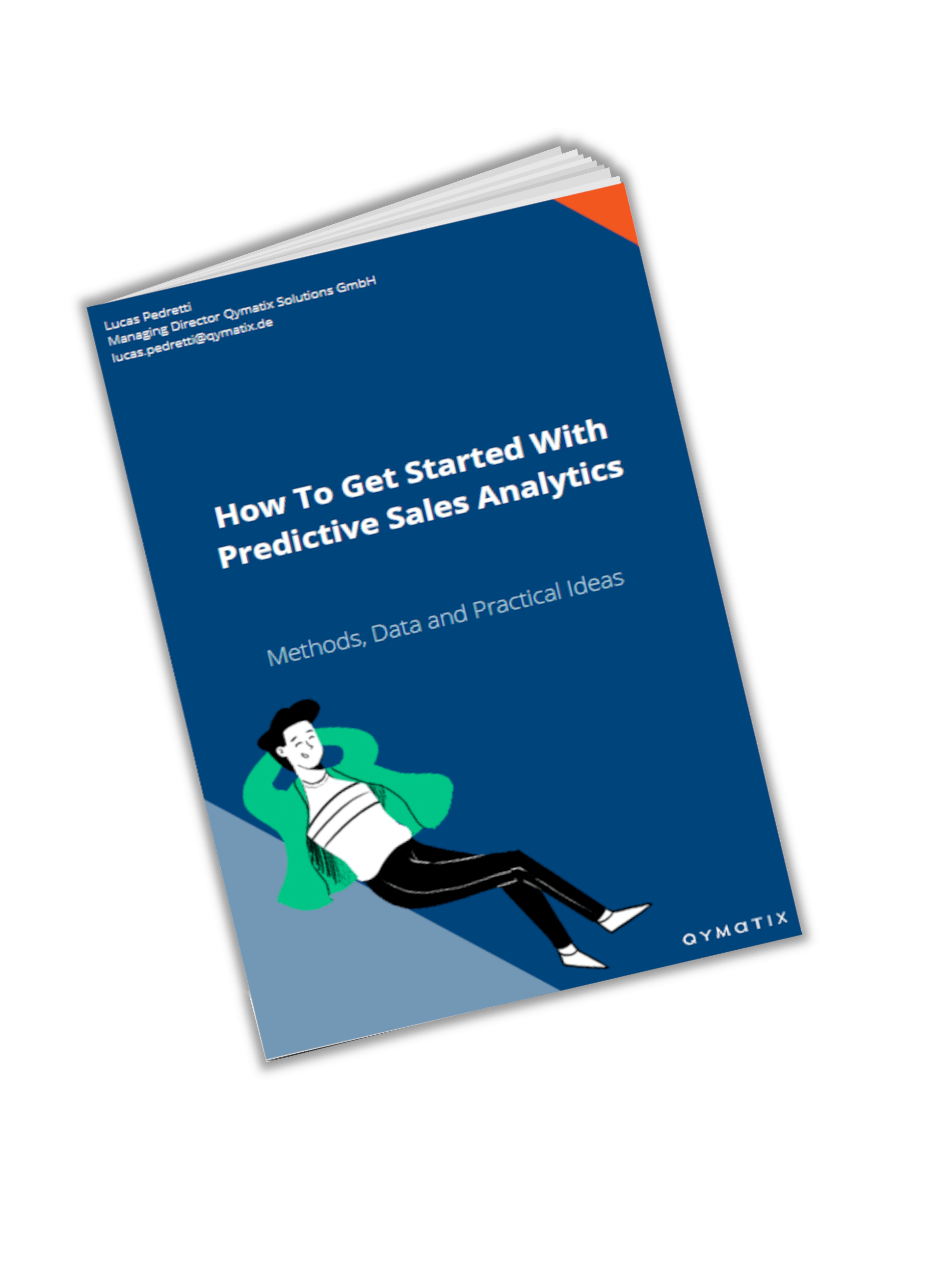How to avoid the Causality Trap of Black-Box Machine Learning

Please enter your Email address
Sales Acceleration with Predictive Analytics Software: How to avoid The Causality Trap of Black-Box Machine Learning.
Successful B2B managers use AI-based predictive analytics software to accelerate sales. However, they often want to find for themselves what the characteristics of their main profitable customers and leads are.
You know this situation well. You want to predict success. You would like to create a set of rules that your sales team can follow to avoid customers from churning or to find hidden sales opportunities. Why cannot your AI sales software do that?
AI experts often frame this limitation as rule-based sales analytics versus machine learning. It has no easy way out and requires your understanding to know when to apply which one.
We will discuss in this article, what is a rule-based system and will briefly compare it with a machine learning software for sales. We will present you with the benefits of the latter; what we call the “actionable is actionable” principle. As the famous German poet Goethe once wrote: “Willing is not enough, we must act!”.
Finally, we will suggest what you can do about it. Let us begin then with the comparison.
Predictive Analytics for Sales: rule-based sales analytics vs machine learning
Imagine you are a sales manager trying to predict which customer will churn, buy more or accept a higher price – three typical sales acceleration challenges. You could try to come up with a set of rules to classify your customers.
Let us take the customer attrition example. You segment your customers based on the country they are based in – say the UK or Germany – and after that, you categorise your customers by the level of yearly revenue – say above or below 5.000 euros.
You end up with four different categories, as shown in the picture below. Now you would try to find out if there are some associations or correlations between the probability of a customer churning and this set of rules.

The chart represents each decision-node with a diamond-shape, each possible option by a square. We have used the colours red and green to represent customers that will churn or not, accordingly. Looks too easy, right?
In business to business customer loyalty, customer attrition and sales analytics are not that easy, however. There are hundreds of different characteristics separating customers that will churn, or accept a new cross-selling offer, from those that will not.
And this is where machine learning comes in:
Predictive analytics software takes all of these features into account. That means a single feature has only a minimal percentage influence on the final result. The forecast is therefore much more comprehensive and accurate.
However, this fact makes it difficult for professional salespeople to understand the “why”. They want to know the characteristics that lead to a customer having a higher probability of churn. But more about this later.
Back to rule-based sales analytics: Motivated sales managers will try to come up with a set of rules to prioritise new sales opportunities or to prioritise customers most likely to churn. There are, however, no simple rules. If the opposite was true, anyone could retain a customer, and you know that that is not the case. The same principle can be applied to, for example, finding cross-selling customers willing to accept a higher price or the buying probability of new customers – usually known as lead scoring.
Predictive Sales Analytics Using Artificial Intelligence – Tip of the AI-Iceberg
As already mentioned, artificial intelligence software and machine learning systems can come up with millions of variations of different characteristics to classify and create predictors of customers that might churn, accept a new product or a higher price.
Unlike the above rule-based methods, machine learning is probabilistic. It uses statistical models rather than deterministic, human-set rules. Often in B2B, it is relevant to explain the decision made by an algorithm. Some machine learning algorithms are not suitable for an explanation.

Going from the first image, you can now extend the branches of the decision tree and the depth of each branch.
There are different types of ML algorithms for classification, and classification is, of course, not the only data mining example of ML.
Machine learning software using decisions trees usually works up to 10 layers of depth and thousands of different branches. Modern predictive sales software iterates this exercise and boosts the branches offering more information about customers.
The benefit is that sales managers are now able to classify customers that might churn or accept a new offer much more precise. This principle applies to other cases, such as cross-selling modelling or pricing analytics. Machine learning systems gain information from millions of small correlations.
The disadvantage is that you are not able to associate very quickly, which are the characteristics that give you more information about a specific customer. Some predictive analytics softwares, such as ours, can sometimes make a list of features visible offering information about the prediction.
Effectively using predictive analytics software: do your part.
You want to predict success, so who cares if you do not know why a customer might churn or accept a new offer? Actionable is actionable. Your sales analytics software can predict, a lot better than your rule-based system, which customer will buy more, churn or accept a higher price. It just cannot always make visible what the specific reason behind the insight is.
First and foremost, even if your predictive analytics software can give you back the features building most of the information, not all features or characteristics are actionable. You might know that customers in your home country have a higher probability of churning, or that customers relationships older than five years tend to pay lower prices. Now what? You cannot change your home country, nor the years you have been selling to a customer.
What would you try to do? You would try to use these insights to predict customer attrition or pricing analytics. But wait a minute, predicting is not what the artificial intelligence software is better at?
Never compete with an algorithm on analysing data, for a human has not a gram of a chance.
There are plenty of studies showing how much better algorithms are than humans at predicting. I am sure you have read about the Amazon story, in which its CEO Jeff Bezos fired an entire editorial team once he learnt that the algorithms were a lot better at predicting which books other customers might buy.
Your job is to do what you are best at: selling to the customer, retaining him, informing him about the added-value features of your products and solutions. Do not waste your valuable time trying to beat a machine.
Predictive analytics using machine learning works best on decisions that get made repeatedly, choosing what customer to contact, which products to promote. Sometimes you might need strategic insights. For now, leave aside the need for those insights and move your feet one step at the time.
CALCULATE NOW THE ROI OF QYMATIX PREDICTIVE SALES SOFTWARE
How to avoid The Causality Trap of Black-Box Machine Learning – Summary
Advanced predictive analytics software uses machine learning to accelerate sales. It offers a holistic approach to sales analytics with pricing analytics, customer attrition and cross-selling modelling.
This application of predictive analytics for sales is not without caveats. Successful sales executives know how to avoid the Causality Trap: learning how to take advantage of machine learning models, even when explaining their predictions is not possible.
To increase customer lifetime value with machine learning, successful sales executives do not try to beat the algorithms. They leave the old, rule-based prioritisation for machine learning-based scoring. Using predictive analytics for sales means, nonetheless, not always knowing why or how the software arrives at its recommendations.
Rule-based vs. Machine learning
| Rule-Based | Machine learning based |
|---|---|
| Definition: you want to understand the characteristic of your more successful sales opportunities, customers, or customer that churned. | Definition: Definition: You train an algorithm or a software to automatically predict which are the sales opportunities with highest chances, or customers with highest attrition risk. |
| Main Benefit: Correlations look understandable and explainable. | Main Benefit: An ML predictive software is more powerful and accurate. It allows salespeople to focus on the sales activities and not in analytics. |
| Main disadvantage: The model uses a limited set of rules and requires time-consuming analytics and interpretation for its application. | Main disadvantage: The high number of possible correlations that the model is using can make its predictions hard to understand and explain (Black Box). |
I WANT TO KNOW HOW MACHINE LEARNING CAN HELP ME.
Free eBook for download: How To Get Started With Predictive Sales Analytics – Methods, data and practical ideas
Predictive analytics is the technology that enables a look into the future. What data do you need? How do you get started with predictive analytics? What methods can you use?
Download the free eBook now.
- We will use this data only to contact you for discussing predictive sales KPIs. You can read here our declaration on data protection.

Further Read:
Fitzgerald, M.: The Four Traps of Predictive Analytics, Ed. MIT Sloan Review

